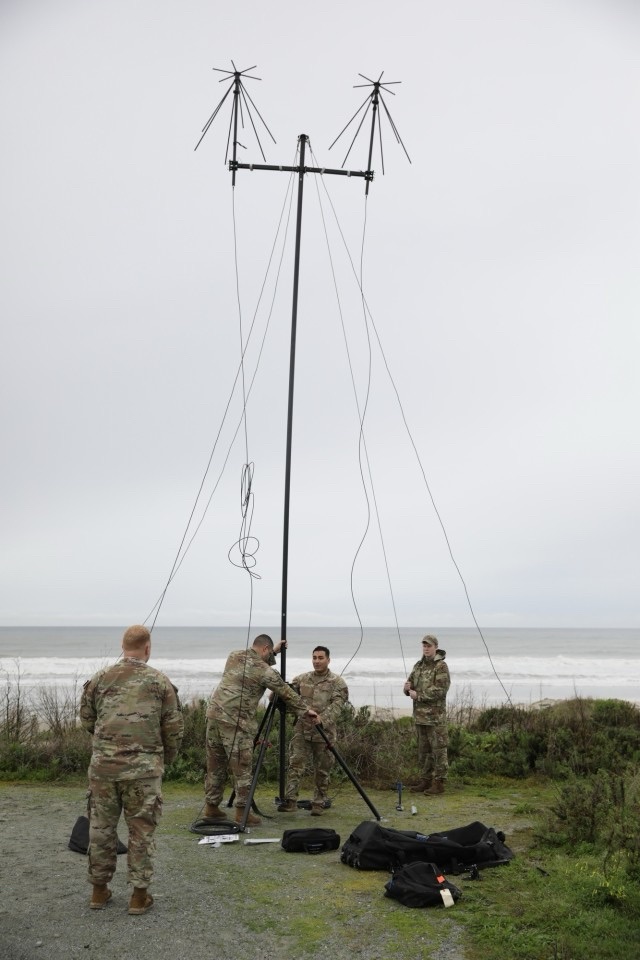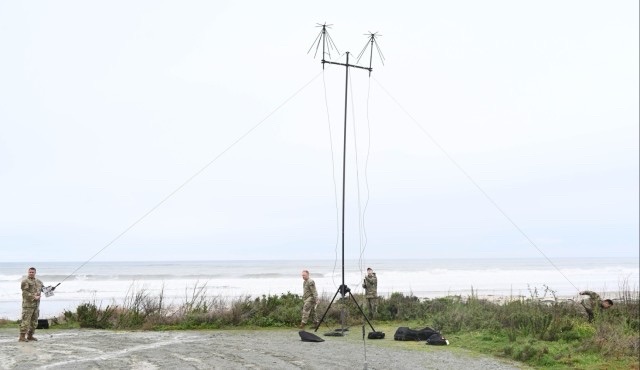
CAMP PENDLETON, Calif. — Pushing forward on Army Futures Command’s mission of multinational and joint interoperability, Project Convergence Capstone 4 is experimenting with the capabilities of joint and multinational layered air and missile defense systems.
PC-C4 is an Army-hosted, joint and multinational experiment that will inform the integration of modernization capabilities, such as layered defense systems that will increase the effectiveness of weapon systems and force protection.

Layered defense’s primary goal during PC-C4 is to experiment with sensor capabilities from unmanned drones and manned aircraft that send data to translating nodes that interpret it for anti-aircraft interceptors.
“Layered defense means we will see different weapons against targets from the defended area,” said U.S. Air Force Maj. Morgan Huttes, the director of operations from the 134th Air Control Squadron. “This way the coalition can increase the probability of kill while maximizing our weapons efficiency.”

The experiments at Capstone 4 will focus on implementing these strategies as a team of Multinational and Joint forces.
“During PC-C4, we are truly integrating all the services,” Huttes said. “We are using a U.S. Marine Corps F-35 as the sensor, with a U.S. Air Force unit as the battle management node translating the data so that the target can be shot by an Army missile.”

The F-35 Raptor is used by the U.S. Marine Corps, the U.S. Air Force and U.S. Navy, as well as many NATO and foreign allies, such as the United Kingdom, Australian and Japanese militaries.
“We use the F-35 out here when we’re looking for all kinds of vehicles and ships,” said U.S. Marine Corps Maj. Matteo Occhipinti, a Naval Aviator who has flown with the F-35 extensively. “The big leap in technology is the sensors, and then the data links and the fusion between the two.”

The Joint and Multinational qualities of these experiments are essential to maximizing the sensors, battle management nodes, and weapons, which complicates the enemy’s targeting and eliminates a single point of failure.
“It comes down to fighting for information because even in exercises, there are unknown factors,” Huttes said. “It comes down to teaching your airmen, Soldiers and marines, regardless of rank, to fight for the information they need at their level to help inform commander’s intent and increase their lethality.”

These experiments will increase joint and allied participation as we ensure the Army, as a part of a joint and multinational force, can rapidly converge effects across all domains and help create the Army of 2030.
“The more we do this together, the easier it becomes in reality,” said British Army Lt. Col. Callum Lane, the U.K. exchange officer within the U.S. Army Joint Modernization Command, in charge of multinational integration and interoperability. “And the more agile we become, not just as institutions in our own right, as nations in our own right, but as a partnership of institutions and nations.”
Story by SPC Jackson Gray
Photos SSG Wheeler Brunschmid, SPC Hunter Grice, SPC Christ-Claude Mowandza-Ndinga, SPC Nathan Smith, and PFC Syrr Parker

